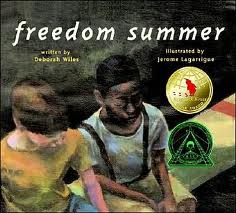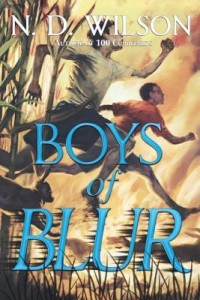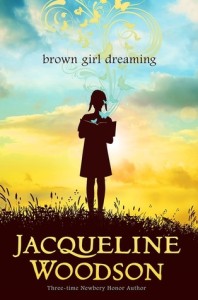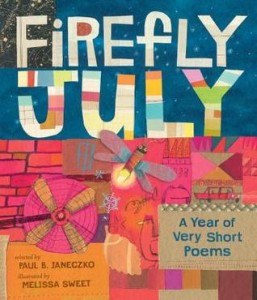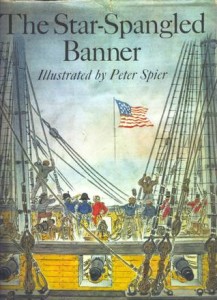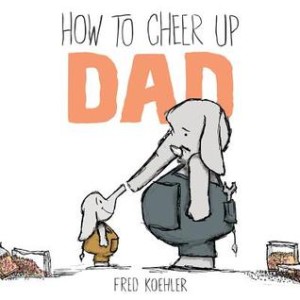
How To Cheer Up Dad
Author and Illustrator: Fred Koehler
Published March 20th, 2014 by Dial
Goodreads Summary: A hilarious book about parent and child relationships for fans of Ian Falconer and Jon Agee–a perfect gift idea for Father’s Day and beyond!
Little Jumbo just can’t understand why his dad is having such a bad day. It couldn’t be the raisins Little Jumbo spit out at the ceiling or the bath he refused to take–after all, Little Jumbo’s dad knew he hated raisins and had already taken a bath that week! Luckily, Little Jumbo is such a thoughtful elephant that he decides to turn his dad’s bad day around with some of his–ahem, his dad’s –favorite things.
How to Cheer up Dad is a standout debut featuring a charmingly oblivious little elephant with serious pluck and staying power. It turns the parent-child roles upside down is a great book for dads and the kids who make them laugh.
Review: This book was a gift for my husband and son to read together, and it is a perfect father-son book. It shows the connection that a child and parent has, and also how a child’s choices can affect a parent and vice versa. It is a wonderful conversation starter and is a wonderful way to teach this lesson. And it is funny!
Additionally, I LOVE the illustrations. Fred Koehler’s style adds an extra layer of joy to the book (with Fred’s “signature messy line work”). The illustrations also add extra information to the story. It takes both the illustrations and the text to tell the whole story.
Author Interview: I’m so happy to be able to share with you all an exclusive author Q&A with Fred Koehler, the author and illustrator of How to Cheer Up Dad.
Kellee @ Unleashing Readers: How did you transition from being a graphic artist to being an author/illustrator?
Fred Koehler: Awesome question! I’ve always been a writer and a doodler–in sketchbooks, my church bulletin, or the margins of my homework assignments. I studied graphic design in college and sadly, there was very little doodling to be done on a computer screen. Several years into my career as a designer I discovered drawing tablets, which allow the artist to use a digital pen that translates directly into the design software. So then I could doodle directly onto the screen and it suddenly clicked. I could use everything I’d learned as a designer and translate that into digital drawings.
The writing had always been a creative outlet for me, and I’d written at least one finished novel (which will never get published because it was awful). But… when I started to combine the writing with the drawing and the design all together, it took my artistry to a completely new level.
UR: What is the inspiration behind How to Cheer Up Dad?
FK: How to Cheer Up Dad is really a reminder to myself and parents everywhere that our kids are capable of being incredibly awesome and terribly frustrating with barely a breath in between. Kids live life without any filters, and it’s up to us as parents to decide how we’re going to react to that reality. The main character, Little Jumbo, is loosely based on both my son, Jack, and myself when I was a kid. Little Jumbo is charmingly oblivious to the massive amounts of trouble he causes, but genuinely dedicated to making things right in the end.
UR: Why elephants?
FK: The elephants came from a random doodle at Mitchell’s Coffee House in Lakeland, FL. I was there with my son, trying to work on some sketches, and my son was trying to get me to do anything but work on my sketches. I just remember being frustrated by the whole ordeal, coming home, and later seeing this doodle of two elephants in my sketchbook. Lucy Cummins, an art director at Simon & Schuster, eventually saw that sketch, and suggested how I might start to turn it into a picture book. I followed her advice and had several publishers fall in love with the characters. Eventually Kate Harrison at Dial Books for Young Readers acquired the manuscript. Plus, elephants are funny. And awesome.
UR: What illustrators and authors inspire you?
FK: One of the coolest things about this industry is the people you get to meet. Growing up I watched all the Chuck Jones cartoons, loved Jim Hensen’s work, and had every Disney animated movie memorized. When I started pursuing the path of becoming an author/illustrator, I got to meet lots and lots of other up-and-coming artists and storytellers who have inspired me. LeUyen Pham (Bedtime for Mommy, Freckleface Strawberry) recently accepted my FB friend request, so she’s at the top of my mind. I love her line work and the expressions that she gets from her characters. I got to watch Molly Idle (Tea Rex, Flora and the Flamingo) go from working for small indie publishers to winning a Caldecott honor last year. Dan Santat (Beekle, Sidekicks) has awesome writing/illustrating chops, and he gave me great advice early on. And the prolific Paul Zelinsky (Z is For Moose, The Wheels on the Bus, many others) has been kind enough to let me ask him lots of rookie questions along the way.
UR: Are you working on anything else?
FK: Yes! Right now I’ve got two more books under contract. Little Jumbo is getting a sequel, and I’m still working with my incredible editor Kate Harrison and my awesome art director Lily Malcom on how exactly we’re going to one-up the work we did with How to Cheer Up Dad. It’s got such universal relevance and Little Jumbo is such a likable character, we’ve got to make sure and give him a sequel worthy of his potential.
Also great news is that I’m working with Rebecca Davis at Boyds Mills Press to illustrate One Day, The End, which was written by Rebecca Kai Dotlich. And, since I think your readers might like to get the first sneak peek ever, I’m going to let slip a screen shot of the unnamed little girl who will star in this extremely creative book. This image is from my art direction concept that was just recently approved by the publisher. 🙂
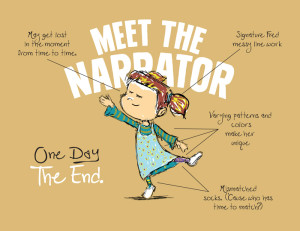
UR: Thank you so much Fred for the amazing interview and exclusive sneak peek! I, personally, am so excited for all of your upcoming projects! And because of how much I loved How to Cheer Up Dad and because of your kindness, I am happy to be able to offer a giveaway of a signed copy of How to Cheer Up Dad with a custom illustration on the inside cover! Thank you Fred for that as well!
Teachers’ Tools for Navigation: This book is great to teach cause and effect. Readers can learn about why the dad is in a foul mood and what Jumbo does to fix it. It would be a perfect way to discuss the difficult concept of cause and effect using a situation that is very accessible.
Discussion Questions: What has caused Little Jumbo’s dad to be in a bad mood? What are the effects of his bad mood? What does Little Jumbo do to help cheer his dad up?
We Flagged:

Dad’s mood was clearly getting worse, so Little Jumbo suggested that Dad needed a time out.
Read This If You Loved: Hug Time by Patrick McDonell, Elephant and Piggie series by Mo Willems, My Dad Thinks He’s Funny by Katrina Germein
Recommended For:


GIVEAWAY
a Rafflecopter giveaway
And to all of our dad readers: Happy Father’s Day!

